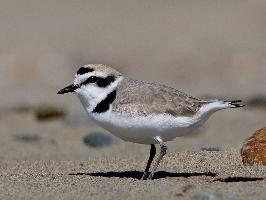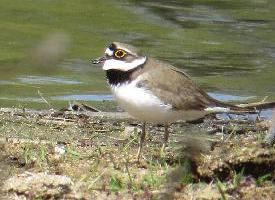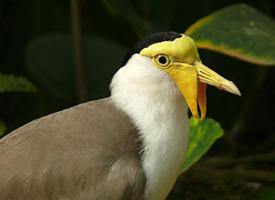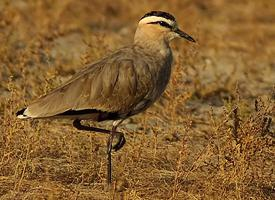
Popis zvířete
The Kentish Plover (Charadrius alexandrinus) is a small, enchanting wader that graces coastal areas, sandy beaches, and salt pans across various parts of the world. This bird is a member of the plover family, Charadriidae, which is known for its compact, round-bodied birds with relatively short bills. The Kentish Plover, with its delicate features and subtle plumage, embodies the quintessential characteristics of its family, presenting a fascinating subject for birdwatchers and nature enthusiasts alike.Adult Kentish Plovers exhibit sexual dimorphism, meaning males and females can be distinguished by their appearance, especially during the breeding season. The male, in its breeding plumage, sports a striking black band across the forehead and around the collar, juxtaposed against its white underparts and sandy-brown upperparts. This contrast is complemented by a white collar and a black bill, lending the male an elegant appearance. The female, while similar in size and shape, wears a more subdued palette, with less pronounced markings and a slightly paler overall hue, allowing her to blend seamlessly into the nesting environment.
Measuring approximately 15-17 cm in length and weighing around 40-70 grams, the Kentish Plover is a model of agility and grace. Its slender legs, which are longer than those of many other plovers, enable it to move with quick, dainty steps as it forages for food along shorelines and mudflats. The diet of the Kentish Plover primarily consists of insects, crustaceans, and marine worms, which it adeptly captures with its fine, pointed bill.
One of the most fascinating aspects of the Kentish Plover's behavior is its breeding and nesting habits. Unlike many bird species where the females are solely responsible for nest-building, both male and female Kentish Plovers partake in creating a simple scrape on the ground, often lined with shells or stones, to house their eggs. The species exhibits a remarkable flexibility in its breeding strategy, with some populations forming monogamous pairs while others practice polygamy.
The female typically lays a clutch of two to four eggs, which are incubated by both parents in shifts. This shared parenting extends to the protection and rearing of the chicks once they hatch. Kentish Plover chicks are precocial, meaning they are born with their eyes open and are covered in down, ready to leave the nest and follow their parents within hours of hatching. This early independence is crucial for their survival in the dynamic and often harsh environments they inhabit.
The Kentish Plover's range is extensive, spanning parts of Europe, Asia, and Africa, with some populations migrating to warmer regions during the winter months. Despite this broad distribution, the species faces threats from habitat loss and disturbance, particularly in areas where human activity encroaches on their breeding grounds.
Conservation efforts are underway in various parts of the world to protect the habitats of the Kentish Plover and ensure the survival of this delicate yet resilient bird. Through careful management of coastal areas and increased awareness of the species' needs, there is hope that the Kentish Plover will continue to thrive and enchant future generations with its subtle beauty and fascinating life history.
Podobná zvířata
Nové fotografie zvířat
Top 10 zvířat
- Chinese water dragon (Physignathus cocincinus)
- Galápagos tortoise (Geochelone nigra complex)
- Dolphin gull (Leucophaeus scoresbii)
- Japanese macaque (Macaca fuscata)
- Colombian red howler (Alouatta seniculus)
- Sea urchins (Echinoidea)
- Moustached guenon (Cercopithecus cephus)
- Diana monkey (Cercopithecus diana)
- Common reed warbler (Acrocephalus scirpaceus)
- Common house mosquito (Culex pipiens)


